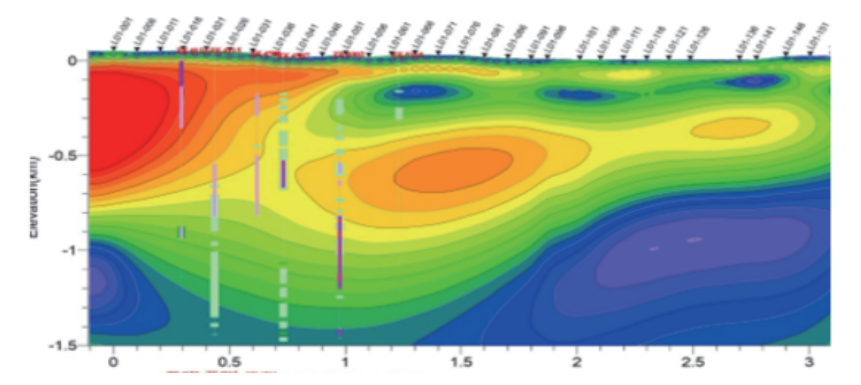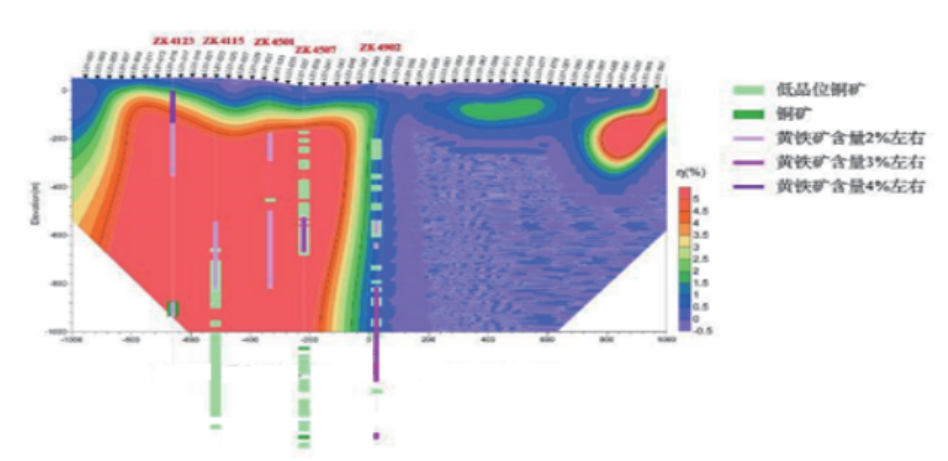The measured results of the spread spectrum IP test in the known porphyry copper mining area of Jiangsu are basically consistent with the information revealed by the borehole
The experiment of deep prospecting with AMT sounding and SSIP has been carried out in a known mining area with strong interference and its northern region. The results show that this method can extract geophysical anomaly information effectively. The details are as follows:
➀Audio magnetotelluric survey (AMT) effects
The test line passes through a certain ore section of the mining area, and the boreholes on the line (or side projection) are all exposed to the ore body. Comparing the borehole information, we can see: The high resistance corresponds to K2x clastic rocks in the shallow layer of the profile, while the low resistance corresponds to K1z volcanic rocks, and the combination of the two generally shows relatively low resistance. The high resistance in the upper layer of the south side of the profile is a common reflection of the granodiorite porphyry and T1 limestone (or marble), and the ore body is concentrated in the transition zone between the two high resistance, that is, in the granodiorite porphyry near the surrounding rock.
Therefore, there is a good correspondence between the measured results and the borehole information, so it is effective to infer the geological structure framework in this area.
➁Spread spectrum IP effect
Comparing the ore information of each borehole, it can be seen that the polarizability anomaly shown by the SPread-spectrum IP sounding has a good correspondence with the iron and copper sulfide exposed by the borehole. The experiment shows that the anomalies revealed by spread spectrum IP have a good correspondence with the distribution of metal sulfide in the known mining area, and the method is effective.

AMT resistivity inversion profile

Spread spectrum IP polarizability inversion profile


